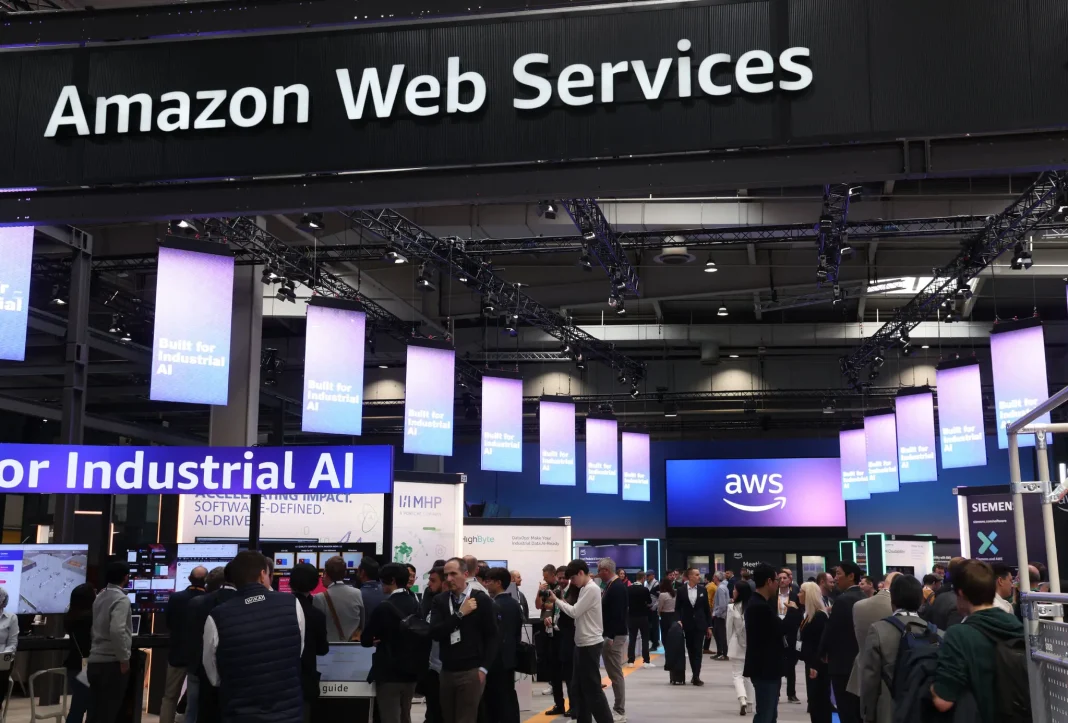If you woke up Monday morning and couldn’t send a snap, pay your friend back on Venmo, or log into your favorite game, you weren’t alone. For over two hours starting around 3 a.m. Eastern, a massive chunk of the internet essentially broke, and most people had no idea why.
The culprit? Amazon Web Services, or AWS. And no, we’re not talking about the place where you buy stuff online.
The Invisible Giant Running Your Digital Life
Here’s something that might blow your mind: Amazon doesn’t just deliver packages. It also runs the behind the scenes infrastructure for a huge portion of the internet. AWS is Amazon’s cloud computing service, and it’s basically the engine room powering thousands of the apps and websites you use every day.
When AWS went down Monday morning, it took down a staggering number of services with it: Snapchat, WhatsApp, Venmo, Coinbase, Hulu, Ring doorbells, Fortnite, and even McDonald’s mobile ordering. The British government’s website crashed. Signal, the secure messaging app, went dark.
By 5:27 a.m., Amazon reported that most services were back online, though they were still working through a backlog of requests that had piled up during the outage.
So What Actually Happened?
Amazon reported an “operational issue” in its Northern Virginia data center region, one of its largest facilities. But here’s the frustrating part: we don’t really know what went wrong. Cloud platforms operate like black boxes. Unless Amazon decides to tell us, we’re left guessing whether it was a technical glitch, a bad software update, or something else entirely.
What we do know is that it wasn’t a cyberattack, based on available information.
Why One Company’s Problem Became Everyone’s Problem
This outage highlights something most people don’t realize: the entire internet basically runs on three companies, Amazon, Microsoft, and Google. When one goes down, millions of users feel it instantly.
Think about it this way: instead of every company building and maintaining their own expensive server rooms and technical infrastructure, most just rent space and computing power from AWS. It’s cheaper, more flexible, and lets companies scale up or down without buying tons of hardware.
But there’s a catch. When everyone depends on the same provider, we’re all vulnerable to the same single point of failure. One technical error in Virginia, and people from London to Los Angeles can’t access basic services.
This Isn’t the First Time
Remember last year’s massive internet outage? That was caused by CrowdStrike, a cybersecurity company you’d probably never heard of, sending out a faulty software update. These incidents keep happening, and they keep proving the same point: our digital infrastructure is more fragile than we’d like to admit.
Why Investors Aren’t Worried (But Maybe We Should Be)
Interestingly, Amazon’s stock price barely moved after the outage. Wall Street isn’t concerned because AWS is incredibly profitable. It makes up only 20 percent of Amazon’s sales but generates about 60 percent of its operating profit.
But some experts are raising red flags. When critical services like secure communications, government websites, and financial apps all depend on a handful of American companies, that creates serious risks for national security and democratic infrastructure.
What This Means for You
The reality is that most of us have no idea how dependent we are on these invisible systems until they break. Your Snapchat streak, your ability to pay rent through Venmo, your work communications; all of it can vanish in seconds because of a problem at a data center you didn’t know existed.
Some companies are starting to diversify, building their own infrastructure again or spreading their services across multiple cloud providers. European governments are pushing for data to be stored and managed within their own borders.
But for now, the next time your apps mysteriously stop working all at once, you’ll know where to look: somewhere in Northern Virginia, inside one of those massive, humming buildings that keep your digital life running, until they don’t.
The Bottom Line: We are all living in the cloud now, whether we realize it or not. And sometimes, clouds have storms.
